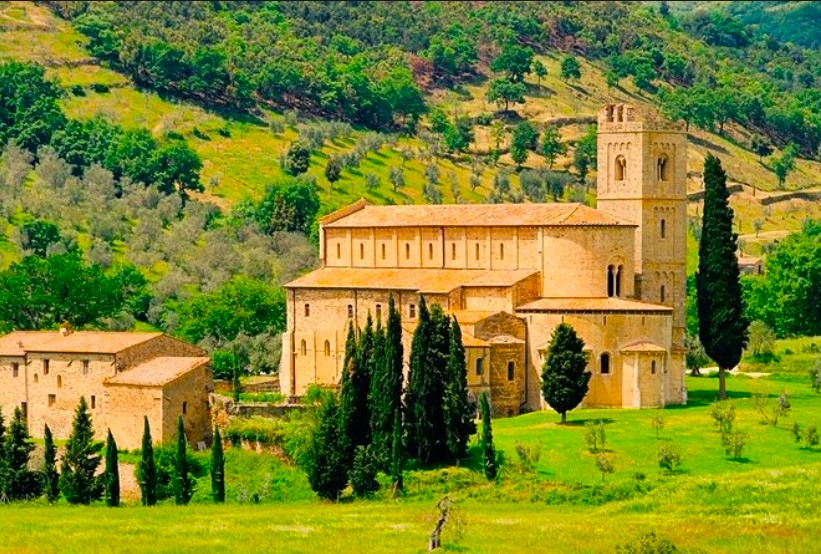Sant'Antimo, Montalcino
The Abbey of Sant'Antimo is one of the most fascinating examples of Romanesque architecture in Tuscany, located a few kilometers from Montalcino, in the province of Siena. Surrounded by wooded hills and vineyards, the abbey is situated in a tranquil valley that enhances its beauty and serenity.
LOCATION
The Abbey of Sant'Antimo is located in the eponymous locality, about 10 km south of Montalcino. Its position is easily reachable by car, following the Strada Provinciale 55, and is immersed in a typical Tuscan landscape characterized by gentle hills, vineyards, and olive groves.
HISTORY
The abbey has ancient origins, dating back at least to the 9th century. Legend has it that it was founded by Emperor Charlemagne in 781, during his return from Rome, as a sign of gratitude for being miraculously healed from the plague. However, historical documents confirm that the abbey already existed in the 9th century and was donated to Benedictine monks.
During the Middle Ages, the abbey became an important religious and cultural center, benefiting from donations from numerous nobles and pilgrims. In the 12th century, it was rebuilt in Romanesque style, assuming the appearance that it largely retains today. Unfortunately, with the decline of Benedictine power, the abbey began to decay and was finally suppressed in 1462. Only in 1870 did the building return to being a place of worship.
ARCHITECTURAL FEATURES
The architecture of the Abbey of Sant'Antimo is a magnificent example of Romanesque style, influenced by French and Lombard architectural elements.
EXTERIOR
The exterior of the abbey is characterized by local travertine and alabaster stone, giving it a warm golden hue. The main façade is simple and austere, typical of Romanesque style, with a decorated portal and a series of lesenes and blind arches creating a vertical effect.
INTERIOR
The interior of the abbey is equally fascinating. The central nave, high and luminous, is flanked by two lower side naves. The round arches and massive columns create a sense of solidity and austerity. The roof consists of a wooden truss, while the semicircular apse is decorated with elegant biforas.
ARCHITECTURAL DETAILS
A significant element is the magnificent sculpted pulpit, dating back to the 12th century, with reliefs depicting biblical scenes and figures of saints. Also noteworthy are the capitals of the columns, decorated with vegetal, animal, and mythological motifs, showing the influence of Lombard art.
The Abbey of Sant'Antimo is a masterpiece of Romanesque architecture that deserves a visit not only for its historical and artistic value but also for its enchanting location and the serenity it exudes. The combination of architectural simplicity and majesty, along with the natural context that surrounds it, makes this place a symbol of the spirituality and beauty of medieval Tuscany.
Photos: Viator.com / Tuscanypeople.com


 English
English Italiano
Italiano Deutsch
Deutsch Français
Français